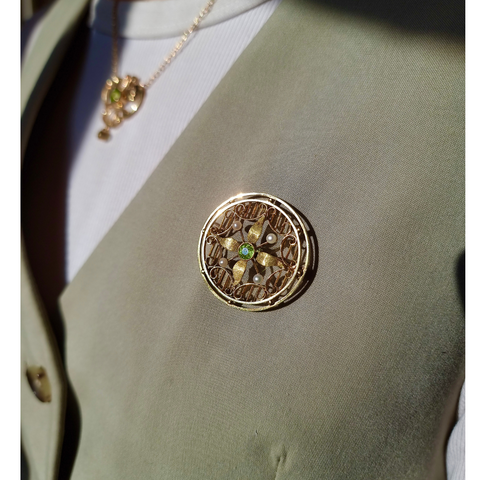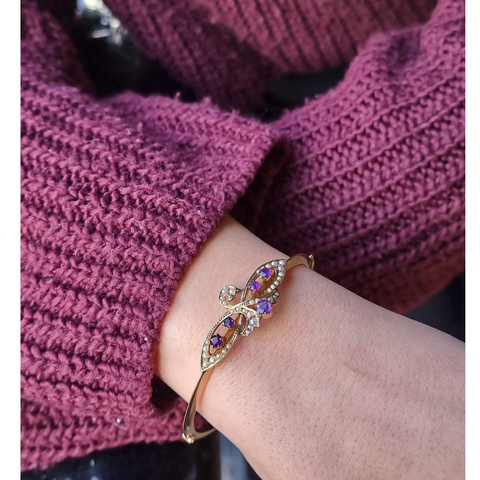March 8th marks International Women’s Day, a day where we celebrate the remarkable achievements made by women today and those who made a difference in history for women everywhere. This year we would like to remember the remarkable women of the Suffragettes and the significance behind the colours and jewellery worn during this pivotal moment in history.
The Movement
The Suffragette movement, which battled for women's right to vote, was a turning point in the history of women's rights. The movement began in the late 19th century and gained momentum throughout the early 20th century. It was a highly organised and determined movement that used a variety of tactics to promote its cause, including protests, demonstrations and civil disobedience. Some key women from the movement include Emmeline Pankhurst, her daughters Christabel and Sylvia Pankhurst, Susan B. Anthony, Elizabeth Cady Stanton, Emily Davison and Alice Paul. These women were instrumental in advancing the cause of women's suffrage. Their efforts paved the way for the women's rights movement of the 20th century, and it is a movement that has left a lasting impact on society.
The Significance of Jewellery
Women who were part of the Suffragette movement used many symbols to promote their cause, and one of the most notable symbols was their jewellery. Suffragette jewellery was worn by women as a statement of their support for the cause and it became a powerful tool in the fight for women's right to vote.
Suffragette jewellery was designed to be eye-catching and it often featured the colours green, purple and white. These colours represented the movement's message, with green symbolising hope, white representing purity and purple symbolising dignity. The Suffragette jewellery was often handmade and featured intricate designs that reflected the values and beliefs of the women who wore them.
Brooches
One of the most iconic pieces of Suffragette jewellery was the brooch. These brooches were designed to be worn on the lapel of a jacket or coat, and they often featured a central stone in the colours of the Suffragette movement. The most common central stone used in Suffragette brooches was the amethyst, which represented purple. The amethyst was often surrounded by diamonds, which represented purity and set in gold, which represented hope.

Pendants
Another popular piece of Suffragette jewellery was the pendant. These pendants were often made from gold or silver and featured a central stone in the colours of the Suffragette movement. Some Suffragette pendants featured the letters "Votes for Women" or the initials of famous Suffragettes, such as Emmeline Pankhurst.
Bracelets
Suffragette bracelets were also popular, and they often featured the colours of the Suffragette movement in the form of stones or enamel. Some Suffragette bracelets also featured charms, such as a miniature Suffragette medal or a miniature megaphone, which represented the women's movement.
Suffragette jewellery was not only a symbol of the women's suffrage movement, but it was also a powerful tool in the fight for women's rights. By wearing Suffragette jewellery, women were making a statement about their beliefs and their right to vote. The jewellery was also used to raise funds for the movement, with many Suffragette jewellery pieces sold to raise money for the cause.
Suffragette jewellery remains a powerful symbol of the fight for women's rights, and it is a reminder of the struggles that women faced in the past and present to achieve equality.




